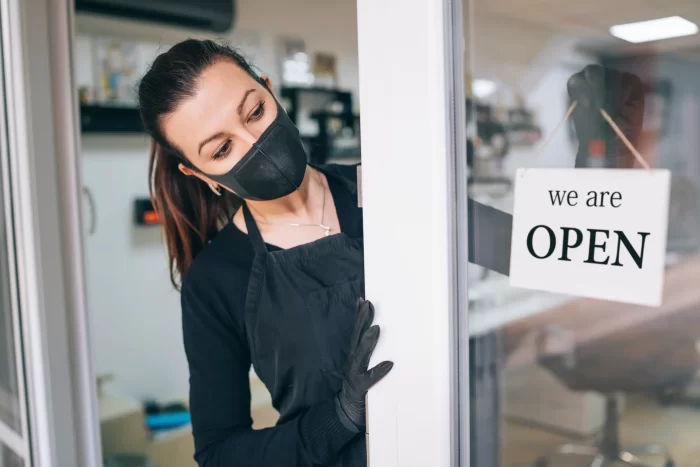
The impact of COVID-19 on the UK’s retail sector has been devastating, with many retailers having already been forced to close their doors for good. However, this coming month has bought a small chink of light to retailers who have been unable to trade since non-essential stores were ordered to shut up shop.
UK Prime Minister, Boris Johnson, has recently announced that all non-essential retailers, including clothing stores, homeware retailers and department centres can reopen from June 15th if the Government’s five tests are met. In order to help retailers prepare for this time, the Government has released new safety guidelines to aid in the safe reopening of public retail spaces.
The guidance has been issued to ensure that all retail spaces are ‘Covid-secure’ and meet the necessary social distancing and hygiene standards; authorities will have the power to enforce these standards as necessary. The prime minister acknowledged that excellent work has already been carried out by the food sector, in particular supermarkets, in response to the changes and believes that we can learn lessons from their experience going forward.
When setting out the steps towards reopening non-essential stores, Boris Johnson said: “I want people to be confident they can shop safely, provided they follow the social distancing rules for all premises […]”
What businesses should consider
We take a look at the current guidance that the Government has issued to shops and branches in order to keep themselves and others safe and compliant.
Risk assessments
Every business should carry out a COVID-19 risk assessment before reopening as you have a legal responsibility to protect the health of your staff, customers and visitors. The HSE has produced a guide to working safely during COVID-19 which you can find here.
Employees
Ensure to open up the conversation with your employees about whether they feel safe returning to work and whether their return is necessary. Remember, the advice stands that if an employee can work from home then they should continue to do so. When you first reopen, try to limit the staff to who is absolutely essential and pay particular attention to those classified as vulnerable.
Social distancing
During the process of reopening, your aim should be to ensure that everyone can remain 2m apart at all times – including when entering and exiting the premises. If these guidelines cannot be maintained for essential activities then you will need to consider additional measures such as screens or barriers, additional hand washing and limiting the time spent doing the activity. These rules will apply across all areas of the business, including common areas and travelling for work purposes.
Customers and visitors
You will likely need to enforce a limit for the amount of people who can visit your store at one time to ensure customers are able to maintain the 2m rule. This should include measures such as handwashing facilities for customers to use upon entering and exiting the store, encouraging the customers to shop alone and managing any queues so they do not cause a disruption or risk to individuals or other businesses.
Cleaning and hygiene
You will need to take the necessary steps to ensure your business is clean before reopening and keeping it clean throughout operation. As well as frequent cleaning, put measures in place to build awareness of good hygiene practices and limit customer handling of stock. All fitting rooms should be closed to the public unless absolutely essential – in which case these should be cleaned between each use.
PPE
If you’re already using PPE, the Government are urging you to continue using this, but they have also reinforced the message that it’s not necessary for non-clinical businesses to get additional PPE. If your workplace does require the use of PPE, you should ensure to provide this free of charge to staff and make sure it fits them properly. If your employees choose to wear face coverings, you have an obligation to support them in using these safely. It’s worth making them aware that the evidence suggests that face coverings have limited benefits. They do not necessarily protect the wearer but can protect others if you have the virus.
Workforce management
Consider splitting staff shifts in such a way that they will not come into contact when coming to and from work and try not to mix shift groups so this happens with the same people. If you have staff returning to work for the first time, ensure that they are fully aware of all safety procedures in place prior to their first shift. Keep your staff updated with clear messaging, especially for those of whom English isn’t their first language.
Inbound and outbound goods
When receiving stock deliveries, make sure this can take place safely while reducing any unnecessary contact. It may be worth putting in larger orders to reduce the number of deliveries you receive if possible.
If your business will be reopening on the 15th June, it’s likely that you will have made a number of changes to comply with COVID-19 Government advice. If you have any concerns about how this could affect your insurance or want to speak through amending certain areas of your cover, please don’t hesitate to call Anthony James on 01509 274000.

